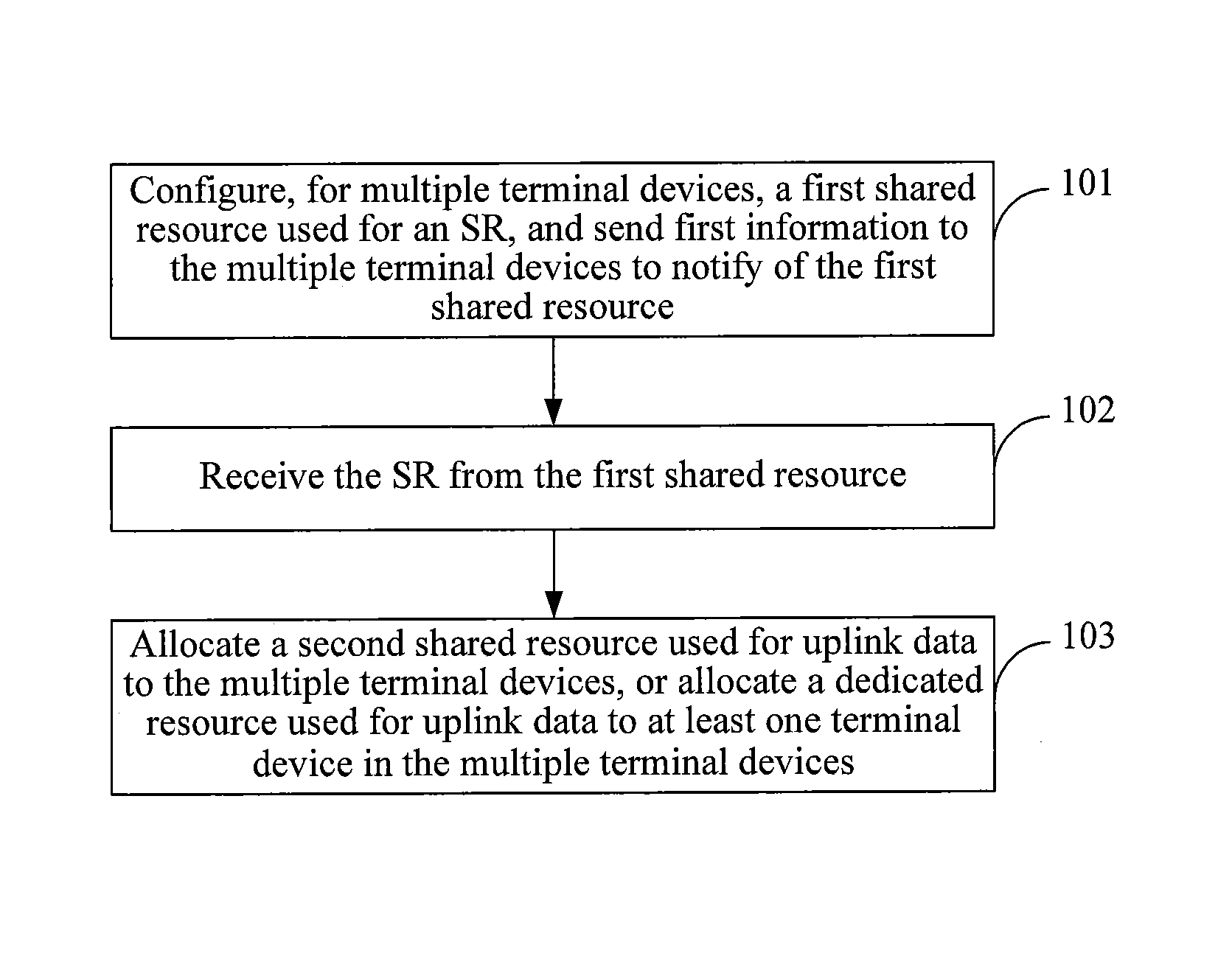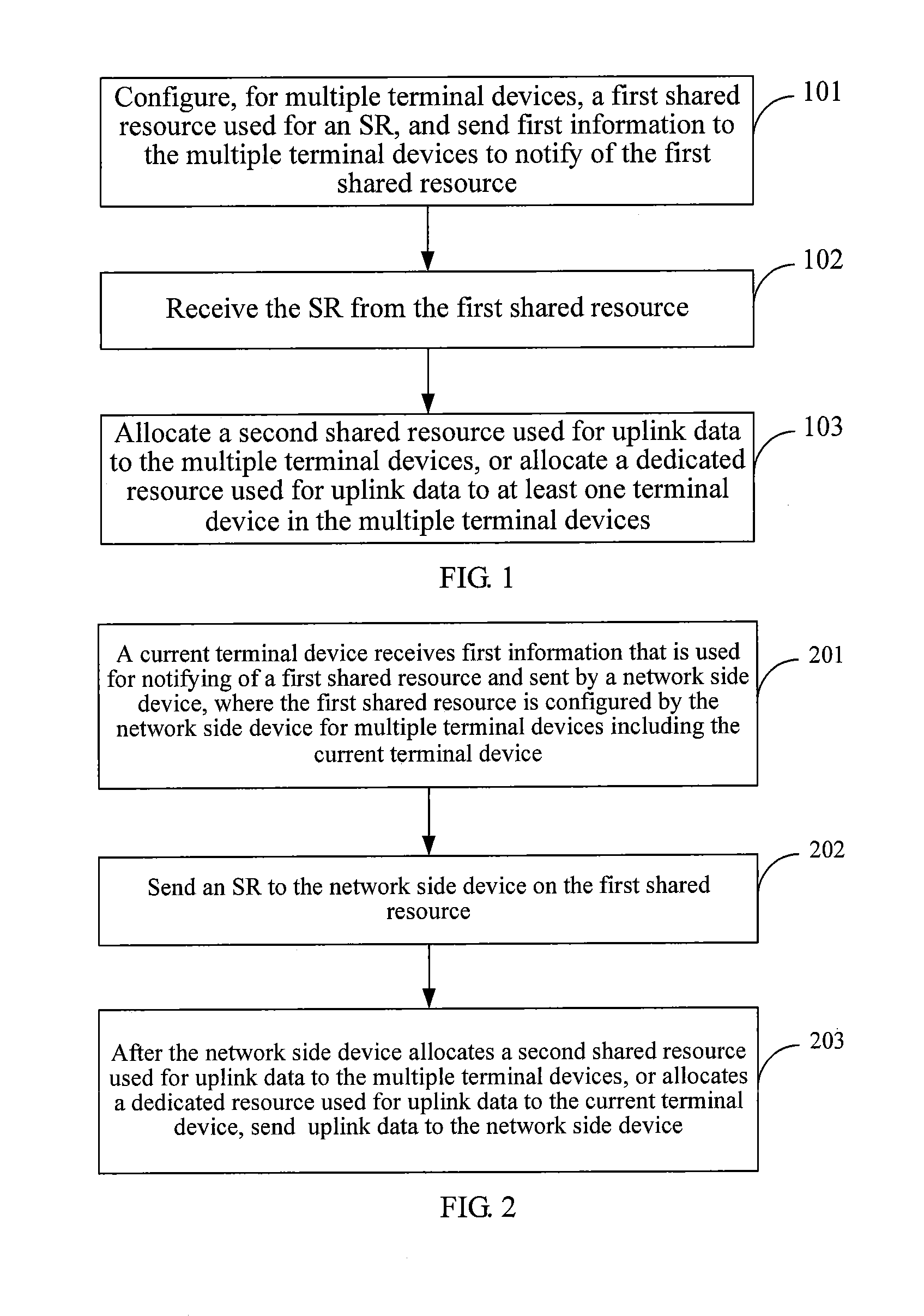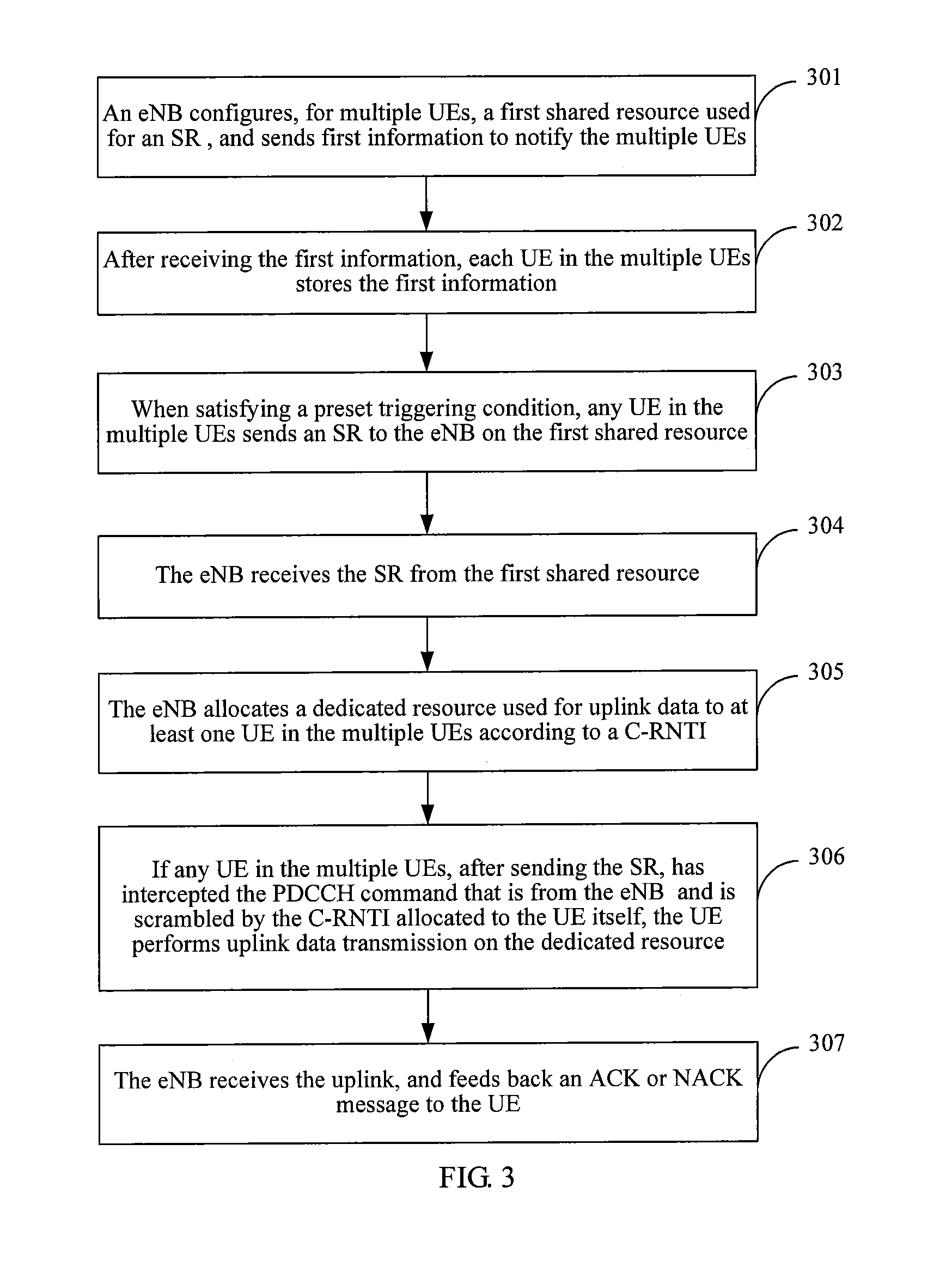Scheduling request method, apparatus and system
a request method and request technology, applied in the field of communication technologies, can solve the problems of low utilization rate of cb resources and waste of cb resources, and achieve the effects of avoiding the waste of uplink data resources, increasing the transmission success rate of uplink data, and low utilization ra
- Summary
- Abstract
- Description
- Claims
- Application Information
AI Technical Summary
Benefits of technology
Problems solved by technology
Method used
Image
Examples
embodiment 1
[0022]Referring to FIG. 1, this embodiment provides a scheduling request method, which includes the following content.[0023]101: Configure a first shared resource for multiple terminal devices, where the first shared resource is used for a terminal device to send an SR; and send first information to the multiple terminal devices, where the first information is used for notifying a terminal device of the first shared resource.[0024]102: Receive an SR from the first shared resource.[0025]103: Allocate a second shared resource used for uplink data to the multiple terminal devices, or allocate a dedicated resource used for uplink data to at least one terminal device of the multiple terminal devices.
[0026]The method is mainly applicable to an apparatus for allocating a scheduling request resource and an uplink data resource to a terminal device, where the apparatus is generally a network side device, such as an eNB in the LTE, a Relay (relay), a NodeB (base station) in a UMTS (Universal ...
embodiment 2
[0028]Referring to FIG. 2, this embodiment provides a scheduling request method, which includes the following content.[0029]201: A current terminal device receives first information sent by a network side device, where the first information is used for notifying of a first shared resource, the first shared resource is used for a terminal device to send an SR and is configured by the network side device for multiple terminal devices, and the multiple terminal devices include the current terminal device.[0030]202: Send an SR to the network side device on the first shared resource.[0031]203: After the network side device allocates a second shared resource used for uplink data to the multiple terminal devices, or allocates a dedicated resource used for uplink data to the current terminal device, send uplink data to the network side device on the second shared resource or the dedicated resource.
[0032]The terminal device is a user side device, which includes, but is not limited to, a UE, ...
embodiment 3
[0035]Referring to FIG. 3, this embodiment provides a scheduling request method, which is applicable to a scenario in which the eNB does not allocate an identifier to a shared resource used for a scheduling request, and does not allocate an index number to the UE, and specifically includes the following content.[0036]301: The eNB configures, for multiple UEs, a first shared resource used for a scheduling request, and sends first information to the multiple UEs, where the first information is used for notifying the UE of the first shared resource.
[0037]The eNB may determine which UEs share an SR resource according to at least one of factors such as QoS (Quality of Service, quality of service) requirement of a service established by each UE, a service feature, a location of the UE or channel quality and the number of SR resources, and a strategy of the eNB. The service established by the UE includes, but is not limited to: a WWW (World Wide Web, world wide web) service, an FTP (File T...
PUM
 Login to View More
Login to View More Abstract
Description
Claims
Application Information
 Login to View More
Login to View More - R&D
- Intellectual Property
- Life Sciences
- Materials
- Tech Scout
- Unparalleled Data Quality
- Higher Quality Content
- 60% Fewer Hallucinations
Browse by: Latest US Patents, China's latest patents, Technical Efficacy Thesaurus, Application Domain, Technology Topic, Popular Technical Reports.
© 2025 PatSnap. All rights reserved.Legal|Privacy policy|Modern Slavery Act Transparency Statement|Sitemap|About US| Contact US: help@patsnap.com



